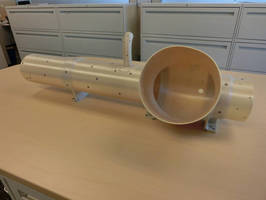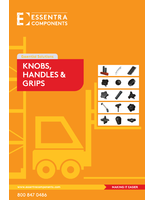3D Printing isn't Rocket Science. Or is it?

Rocket Manufacturer United Launch Alliance Will 3D Print Flight-Ready Rocket Components
ULA Has Vision to Reduce Launch Vehicle Cost by 50 Percent with Help of 3D Printing
3D printing helped consolidate part count from 140 to 16 parts for one complex assembly, lowering costs and risk
Minneapolis Rehovot, Israel –Â Do you think 3D printers are just a new fad for hobbyists or making knickknacks? Or limited to making prototypes? Don’t tell that to rocket manufacturer United Launch Alliance (ULA).
Making launch vehicles for NASA, the Air Force and commercial satellites, ULA knows 3D printing is a serious tool that has been around more than 25 years and is a growing production process. And ULA knows a thing or two about critical applications. On the lower-end, its rockets cost a cool $165 million. And they must propel into space billion-dollar satellites weighing more than 60,000 pounds.
“It’s about as demanding an application as you can get,” says Rich Garrity, VP and General Manager Vertical Solutions Unit for Additive Manufacturing system maker Stratasys Ltd. (Nasdaq:SSYS). “Rockets must endure pressure, G-force, speed, vibration, heat, and extreme cold.”
United Launch Alliance is the premier launch services company in the U.S., and with its heritage systems - Atlas and Delta - it has supported America’s presence in space for more than 50 years. Like other leading edge manufacturers using 3D printing, ULA progressed from prototyping to tooling and then to flight hardware production.
After acquiring two Fortus 900mc 3D Production Systems from Stratasys, ULA began the process of updating the Environmental Control System (ECS) duct on the Atlas V, which will launch with the new 3D component in 2016. The ECS duct is critical to the countdown sequence of a launch, delivering nitrogen to sensitive electronic components within the rocket booster.
The previous design for the ECS duct assembly contained 140 parts, but by modifying the design using FDM 3D Printing Technology, ULA consolidated the number of parts to only 16. This significantly reduces installation time and results in a 57 percent part-cost reduction.
ULA selected ULTEM 9085 FDM thermoplastic material to produce durable, high-performance end-use parts. “ULTEM 9085 has great strength properties over a wide temperature range,” said Greg Arend, Program Manager for Additive Manufacturing at ULA. “We have done testing to show that it is very capable of withstanding temperatures from cryogenic all the way up to extreme heat. And it’s tough enough to handle the vibration and stress of lift off and flight. We’re very satisfied with its performance.”
The Atlas V won’t likely be the last launch vehicle incorporating 3D printing technology. ULA has ambitious plans to increase the quantity of 3D printed parts to over 100 on the next generation rocket.
“We see somewhat of an exponential growth in the utility of 3D printing for flight applications on our current vehicles,” said Arend. “And we intend to use it heavily with our Vulcan rocket.”
Â
Stratasys Ltd. (Nasdaq:SSYS), headquartered in Minneapolis, Minnesota and Rehovot, Israel, is a leading global provider of 3D printing and additive manufacturing solutions. The company's patented FDM®, PolyJet™, and WDM™ 3D Printing technologies produce prototypes and manufactured goods directly from 3D CAD files or other 3D content. Systems include 3D printers for idea development, prototyping and direct digital manufacturing. Stratasys subsidiaries include MakerBot and Solidscape, and the company operates the digital parts manufacturing service, Stratasys Direct Manufacturing. Stratasys has more than 2,800 employees, holds over 600 granted or pending additive manufacturing patents globally, and has received more than 25 awards for its technology and leadership. Online at: www.stratasys.com or http://blog.stratasys.com
ULA: With more than a century of combined heritage, United Launch Alliance is the nation’s most experienced and reliable launch service provider. ULA has successfully delivered more than 90 satellites to orbit that provide critical capabilities for troops in the field, aid meteorologists in tracking severe weather, enable personal device-based GPS navigation and unlock the mysteries of our solar system.
For more information on ULA, visit the ULA website at www.ulalaunch.com.
Media Contacts:
ULA:
Jessica Ryes:
jessica.f.rye@ulalaunch.com
321-730-5646 (o)
Stratasys Media Contacts
USA
Aaron Masterson
Weber Shandwick
Tel. +1-952-346-6258
AMasterson@webershandwick.com
Europe
Jonathan Wake / Miguel Afonso
UK Bespoke
Tel: +44-1737-215200
stratasys@bespoke.co.uk
Stratasys
Arita Mattsoff / Joe Hiemenz
Stratasys
Tel. +972-(0)74-745-4000 (IL)
Tel. +1-952-906-2726 (US)
arita@stratasys.com
joe.hiemenz@stratasys.com
Asia Pacific
Stratasys AP
Janice Lai
Tel. +852 3944 8818
janice.lai@stratasys.com
Japan
Stratasys Japan
Aya Yoshizawa
Tel. +81 90 6473 1812
Aya.yoshizawa@stratasys.com
Korea
Stratasys Korea
Janice Lai
Tel. +852 3944 8818
janice.lai@stratasys.com
Greater China
Stratasys Shanghai
Icy Xie
Tel. +86-21-26018886
icy.xie@stratasys.com
Mexico
Stratasys Mexico
Erica Massini
Tel. +55 11 2626-9229
erica.massini@stratasys.com
Brazil
Tatiana Fonseca
GAD Communications
Tel: +55-11-3846-9981
tatiana@gadcom.com.br




